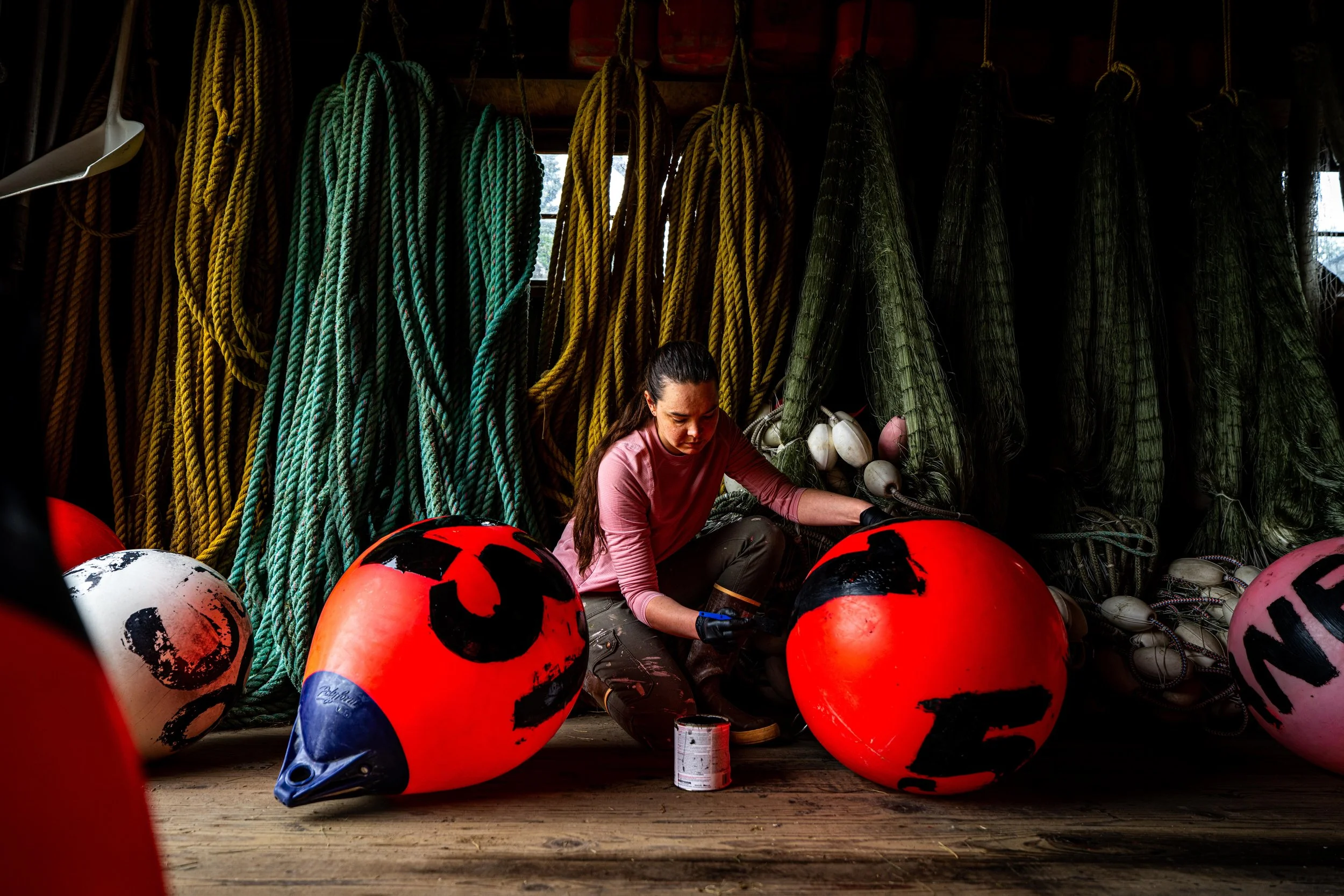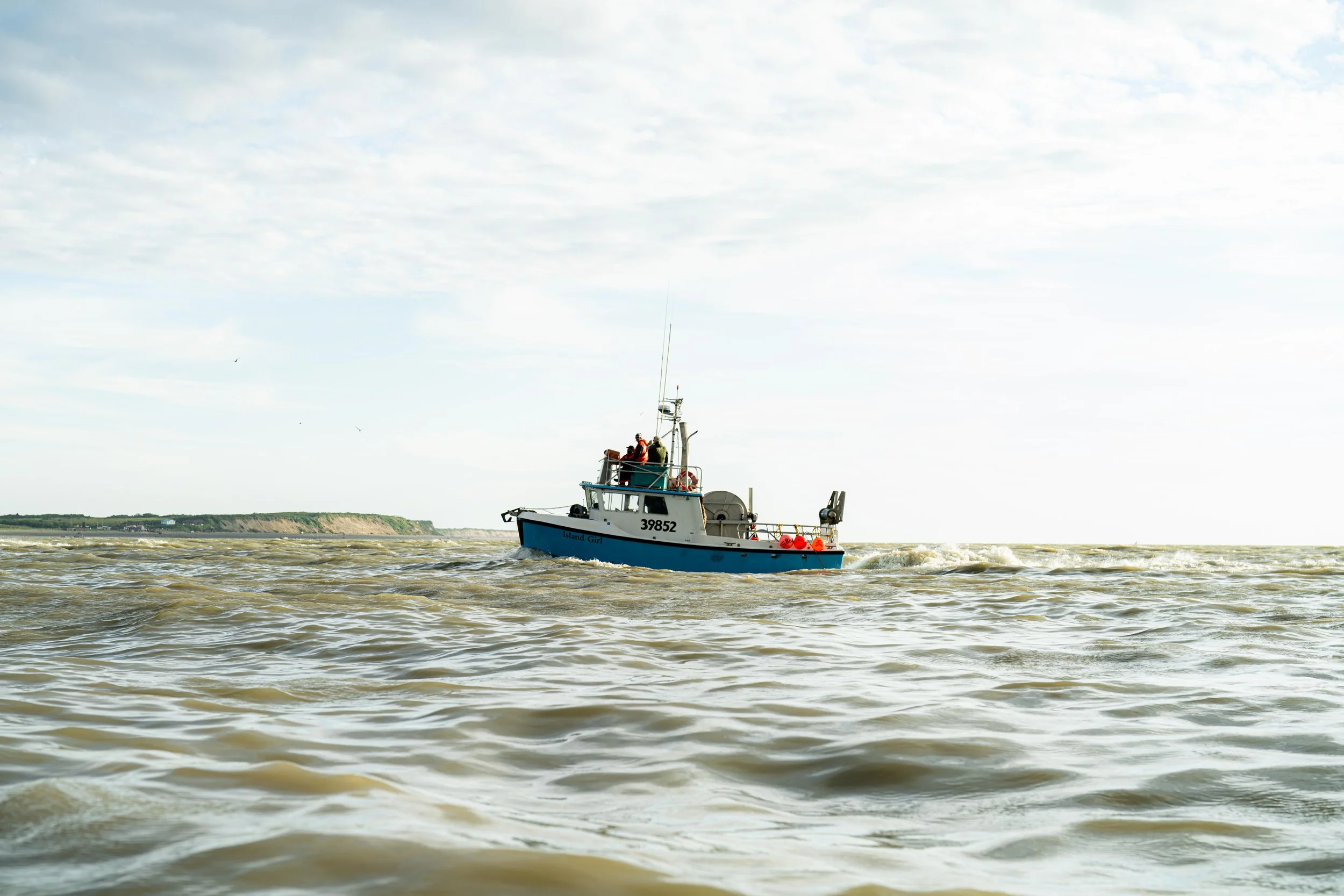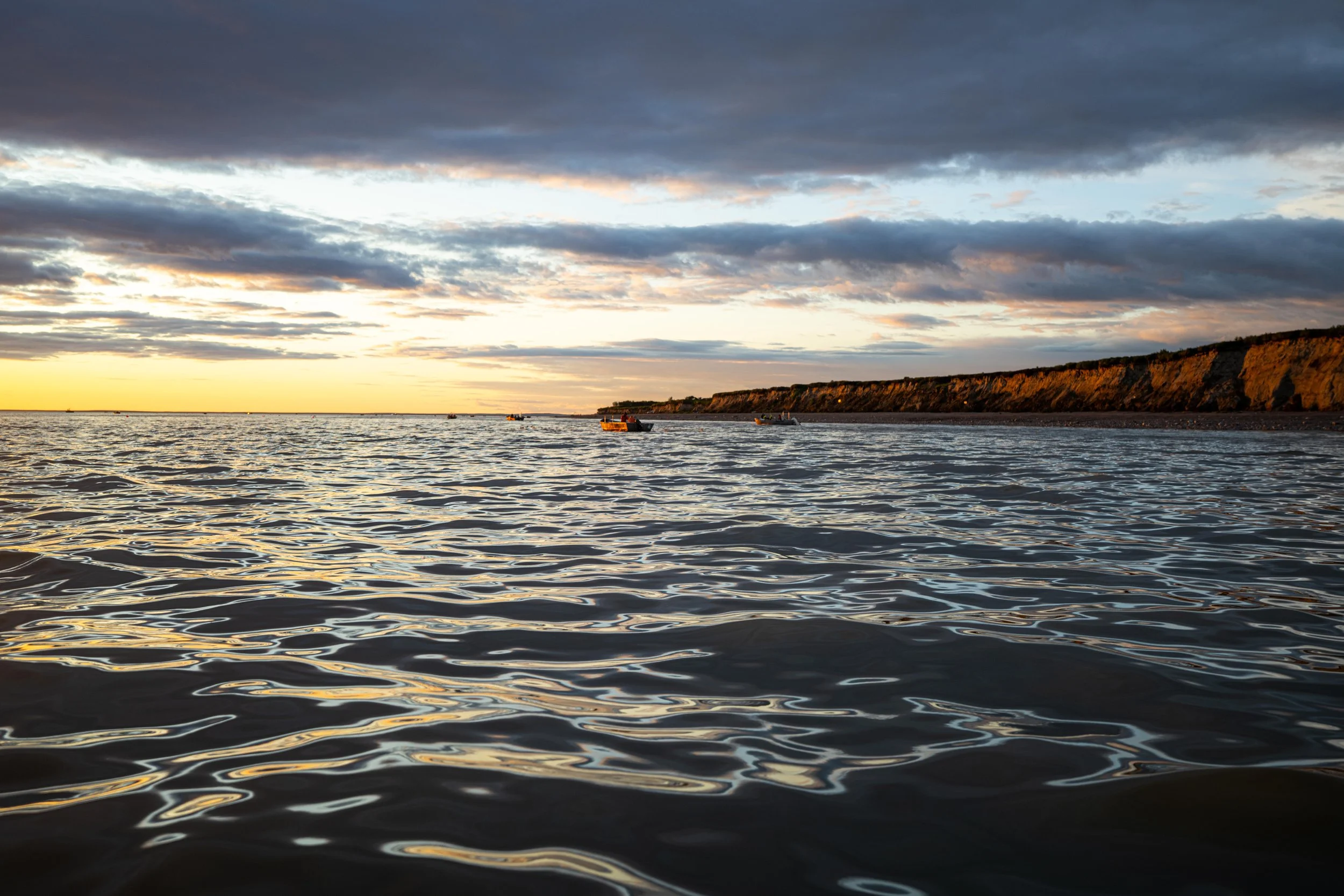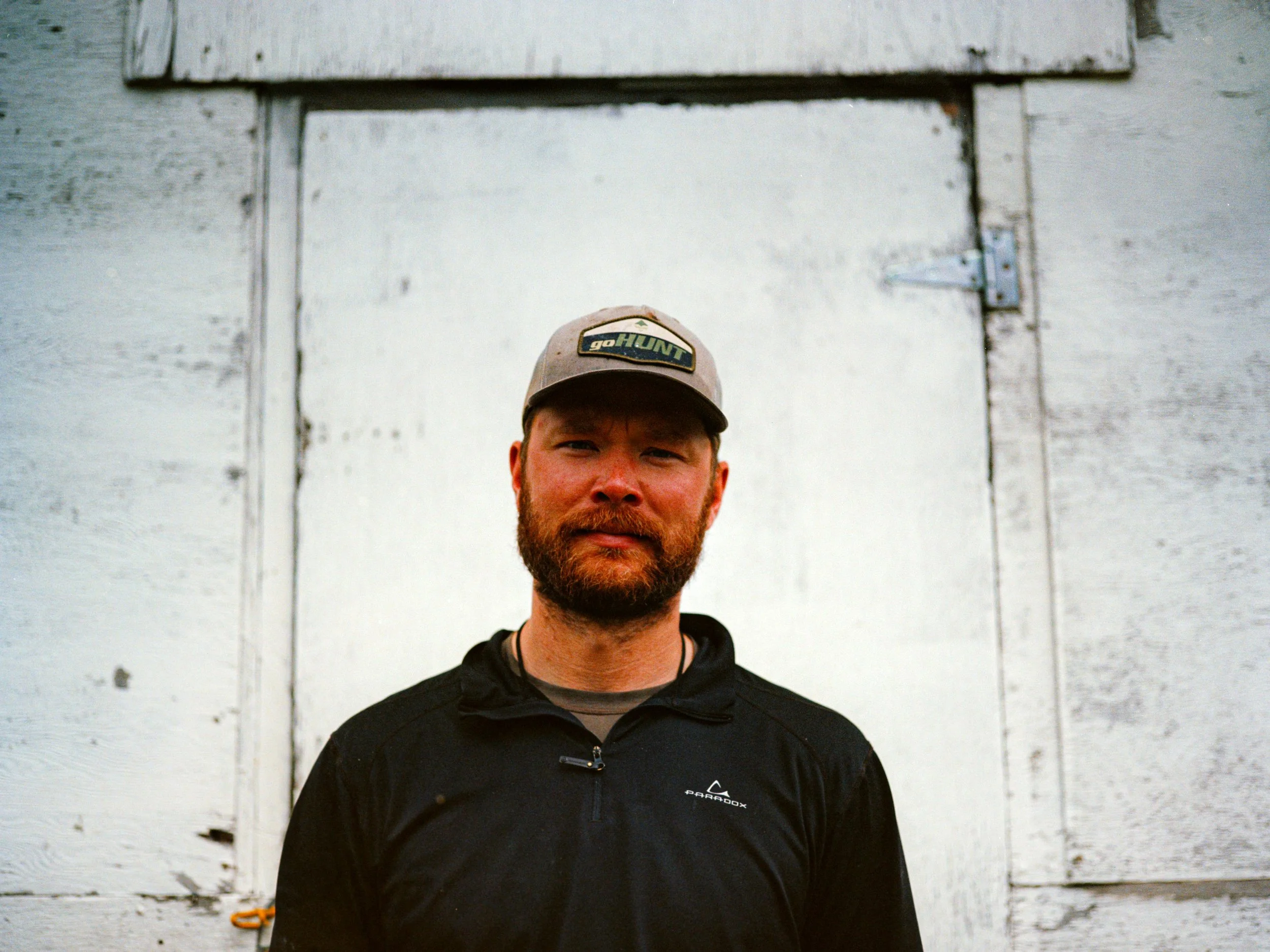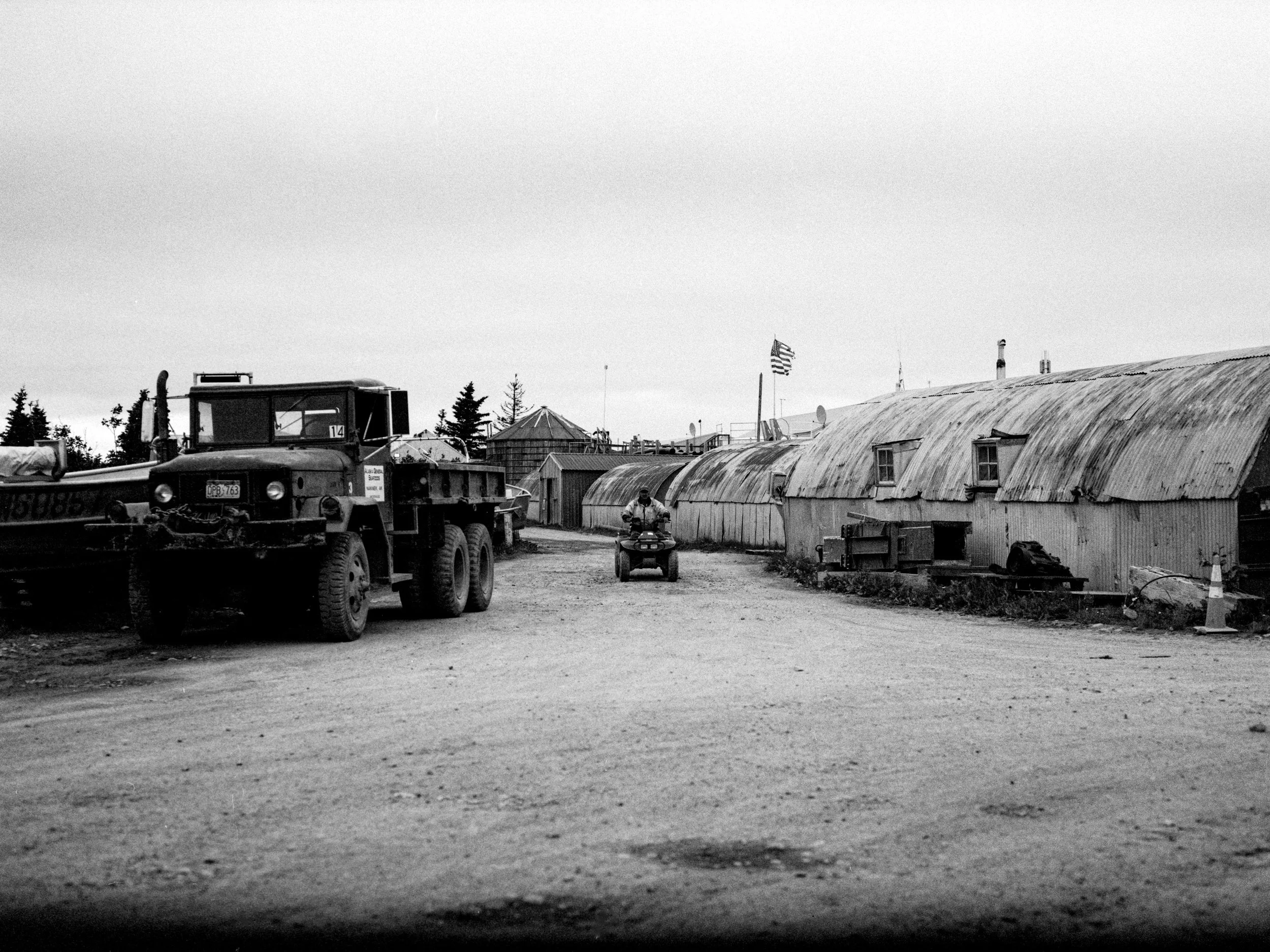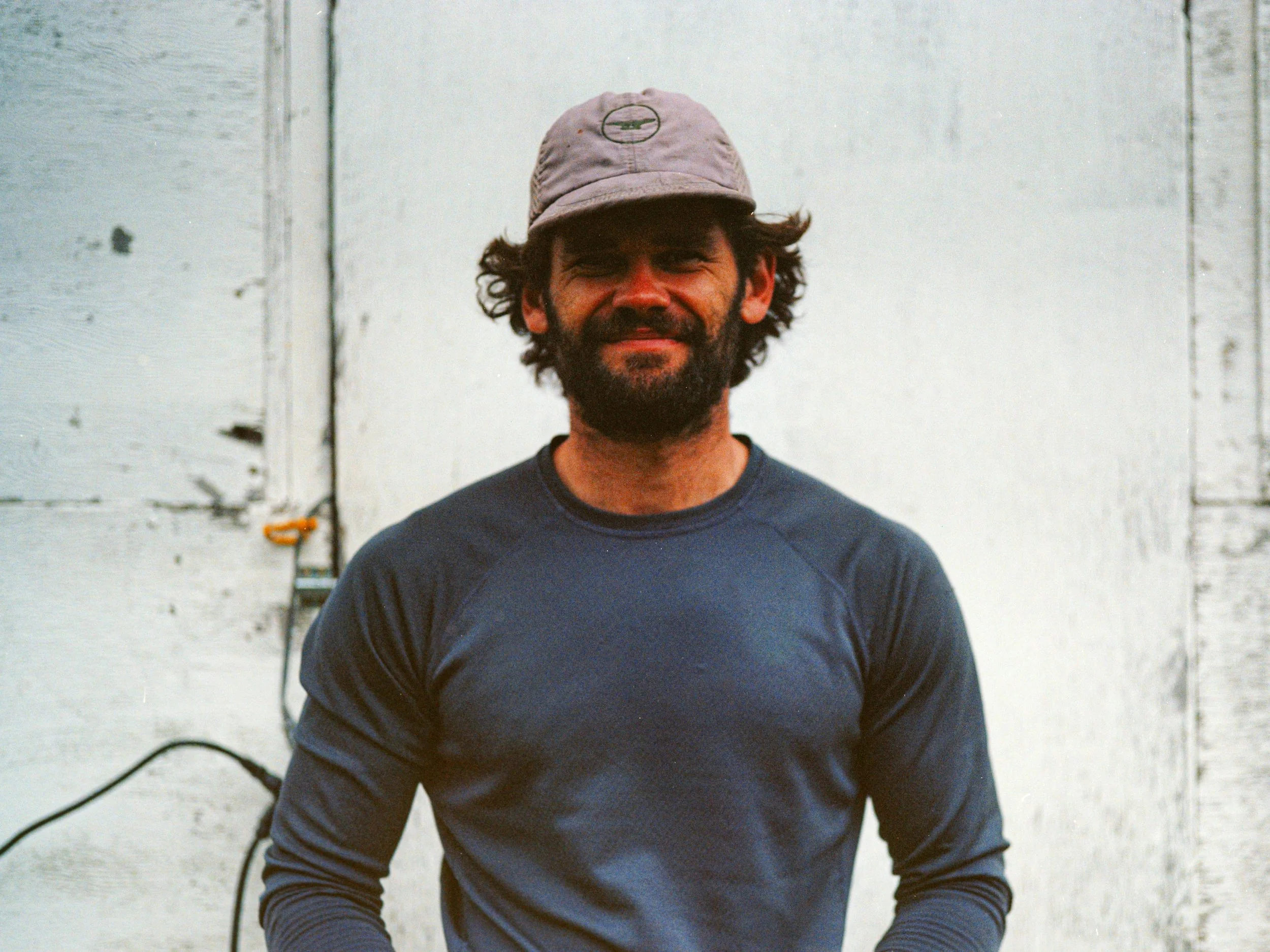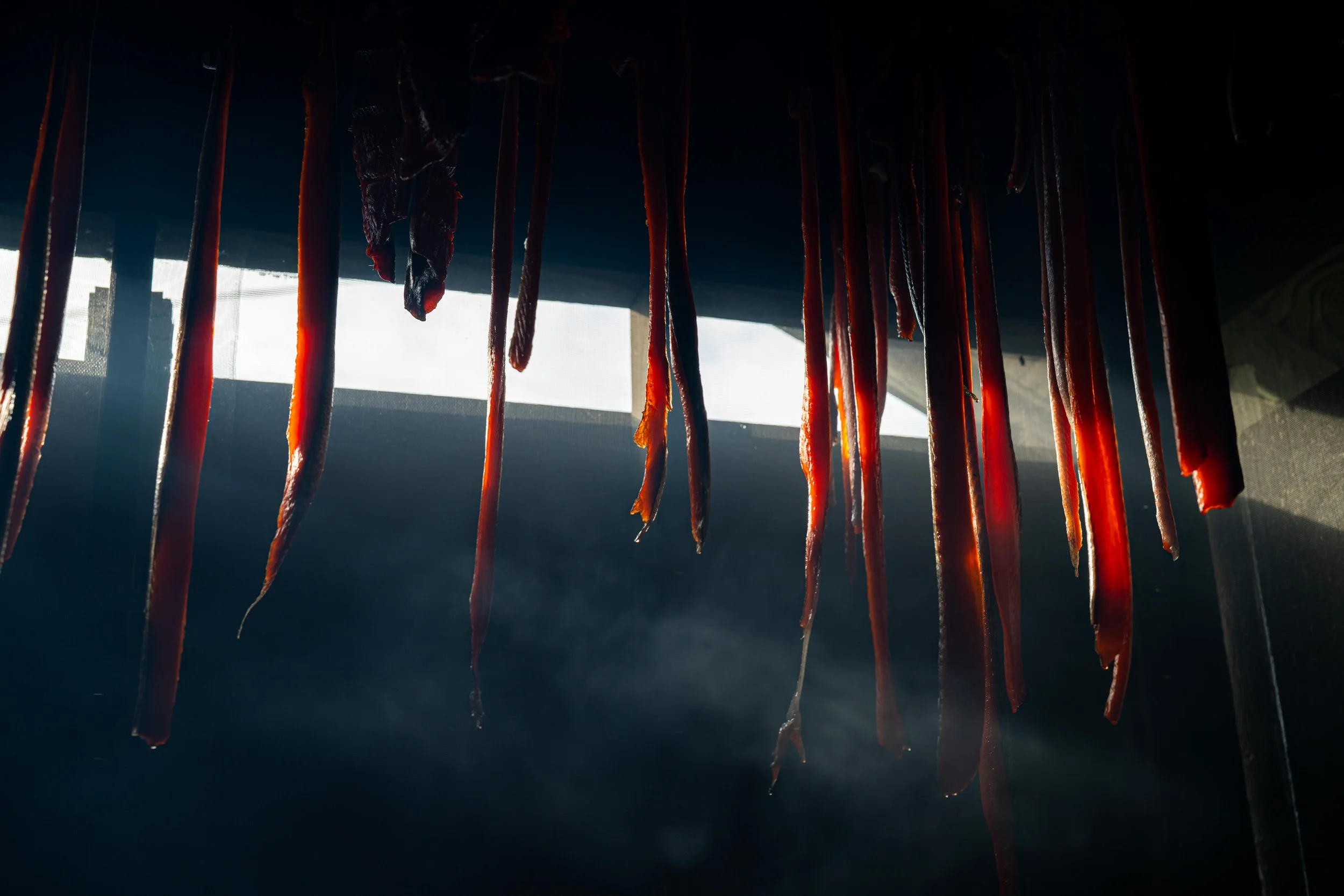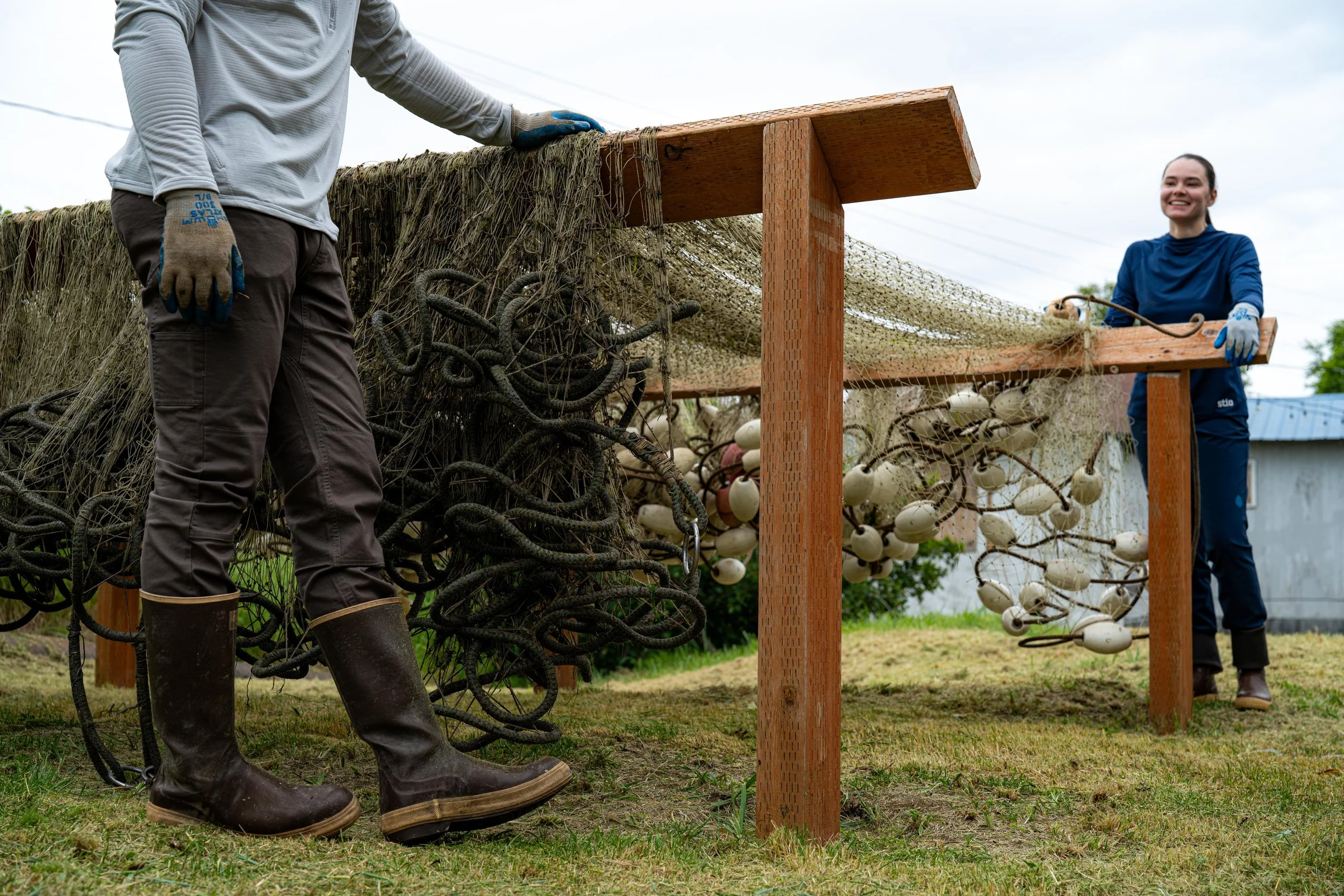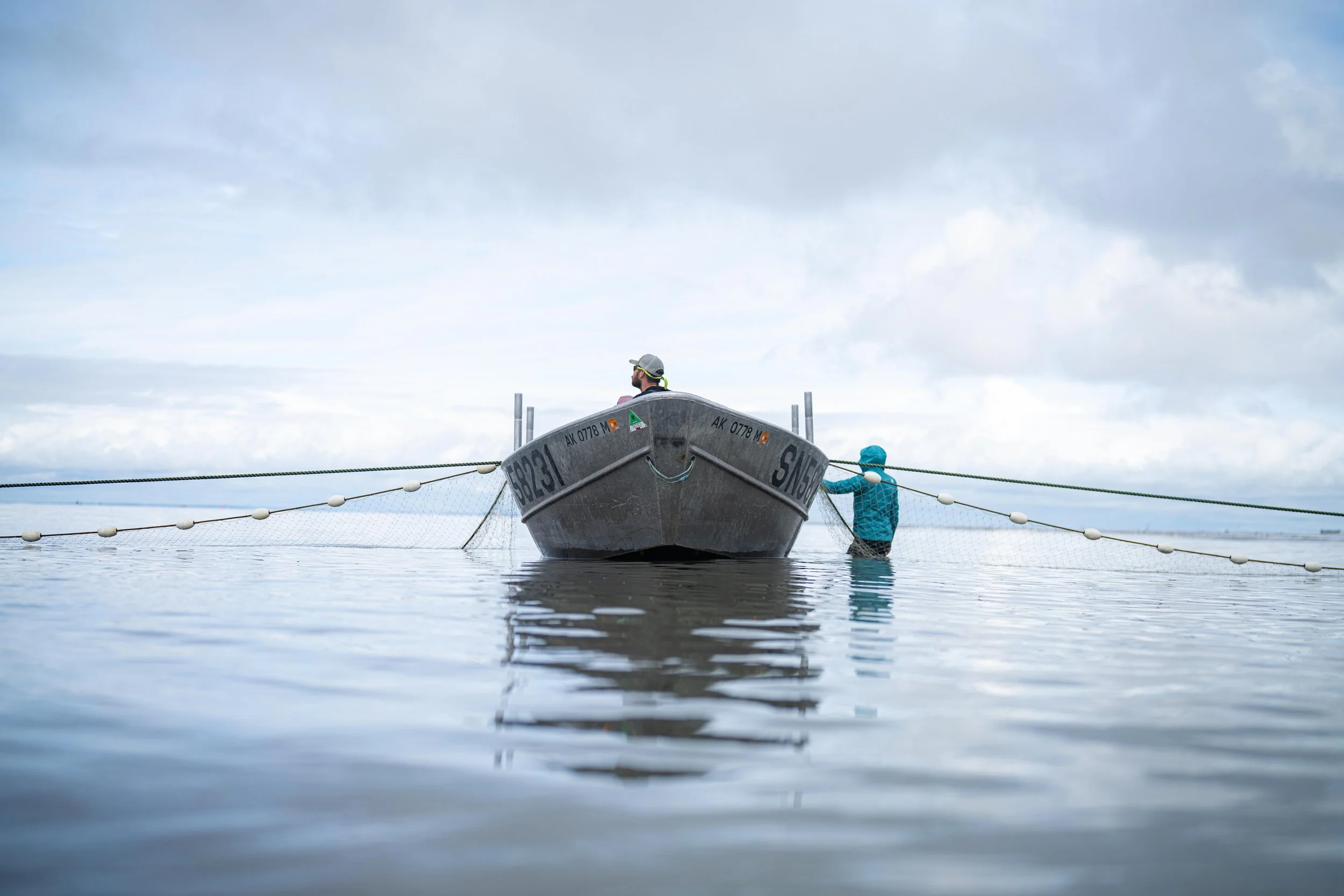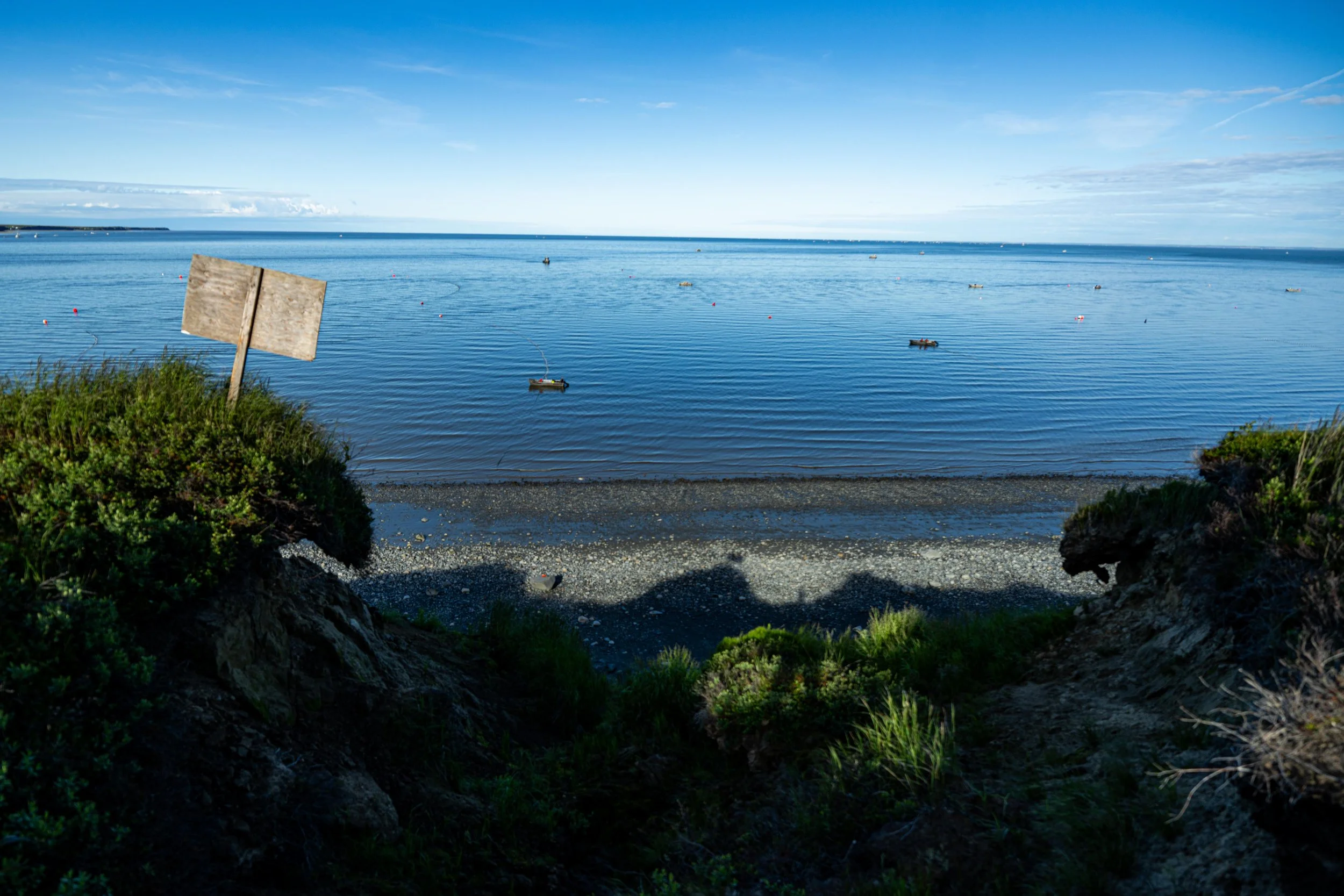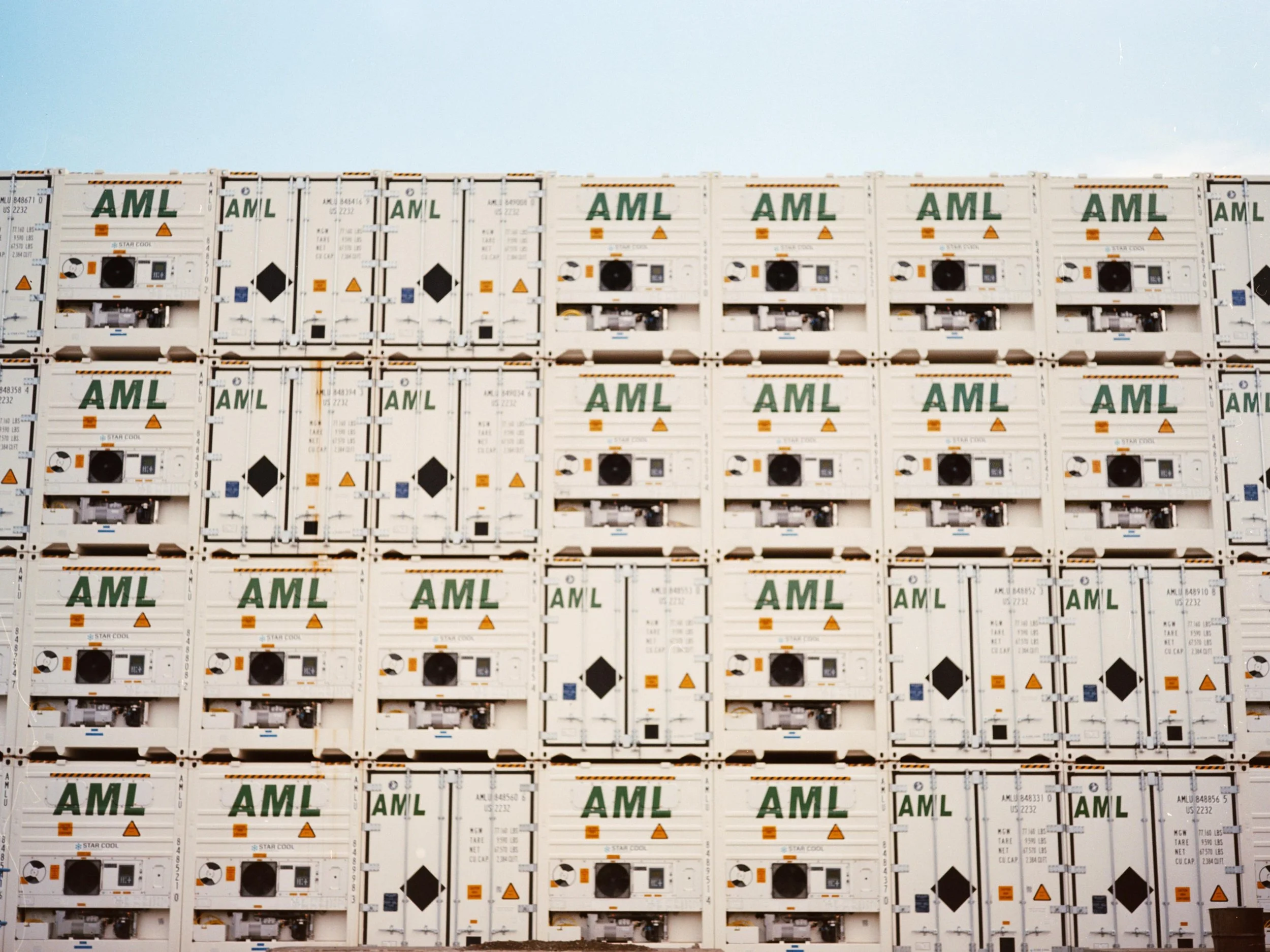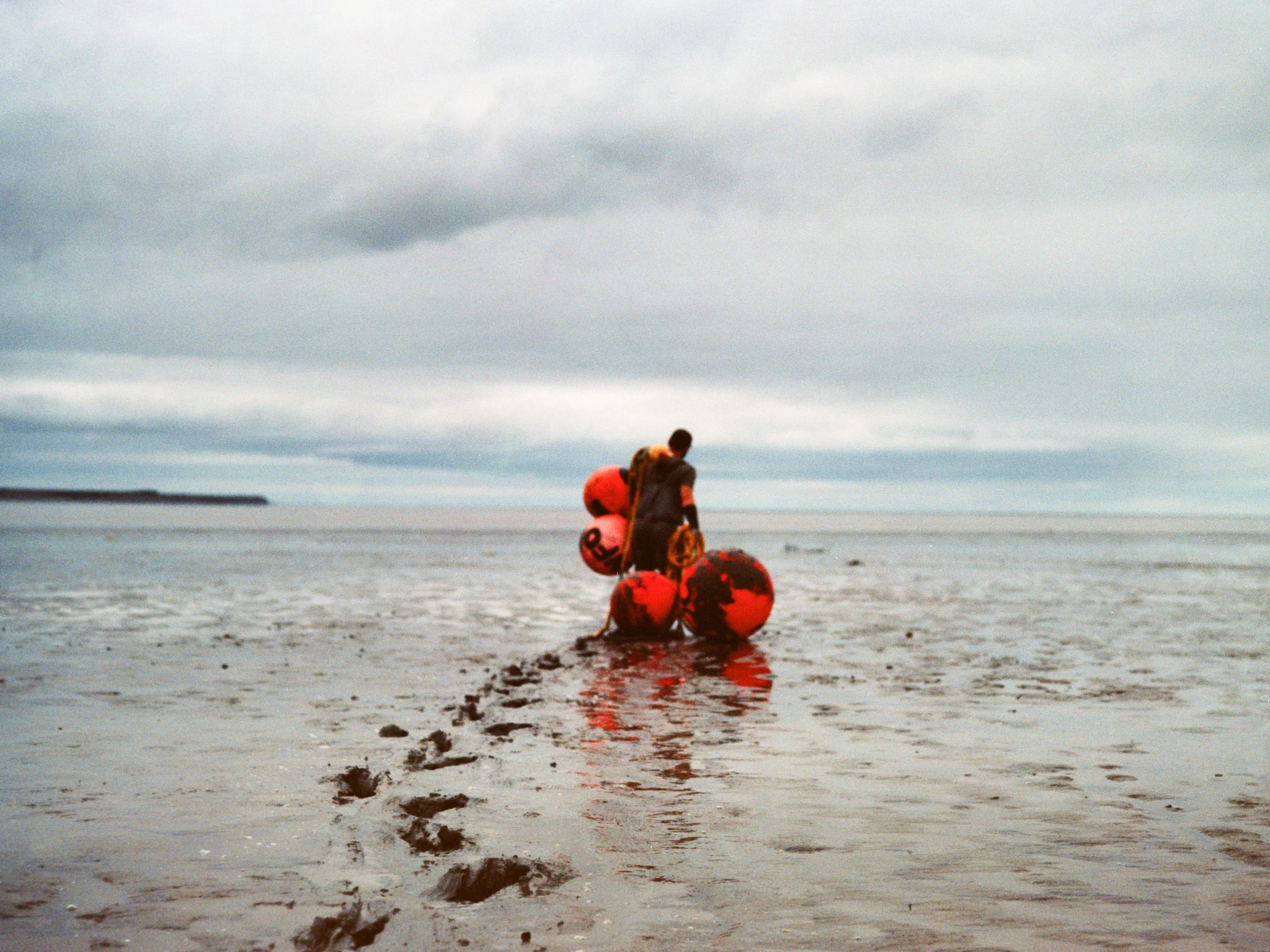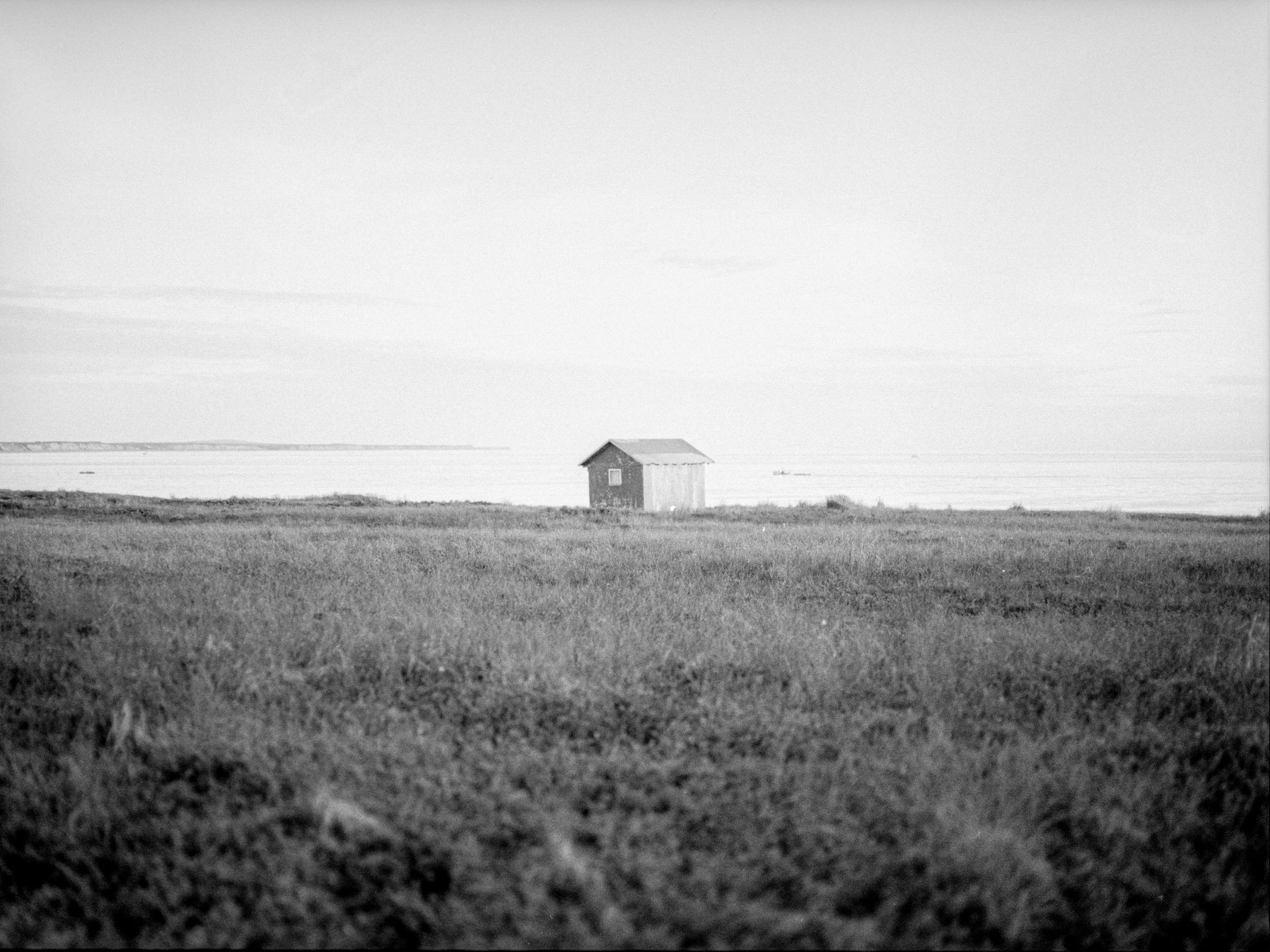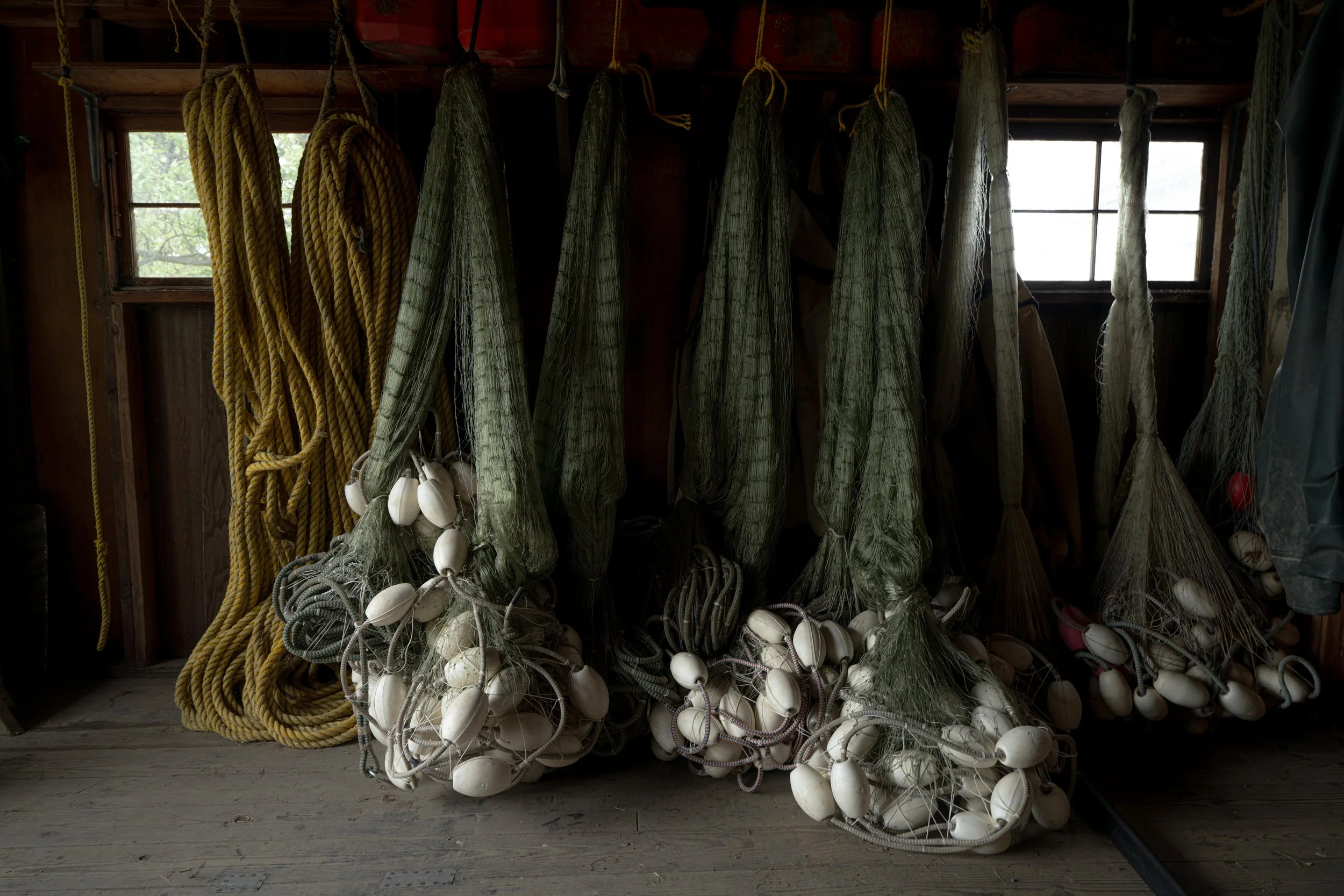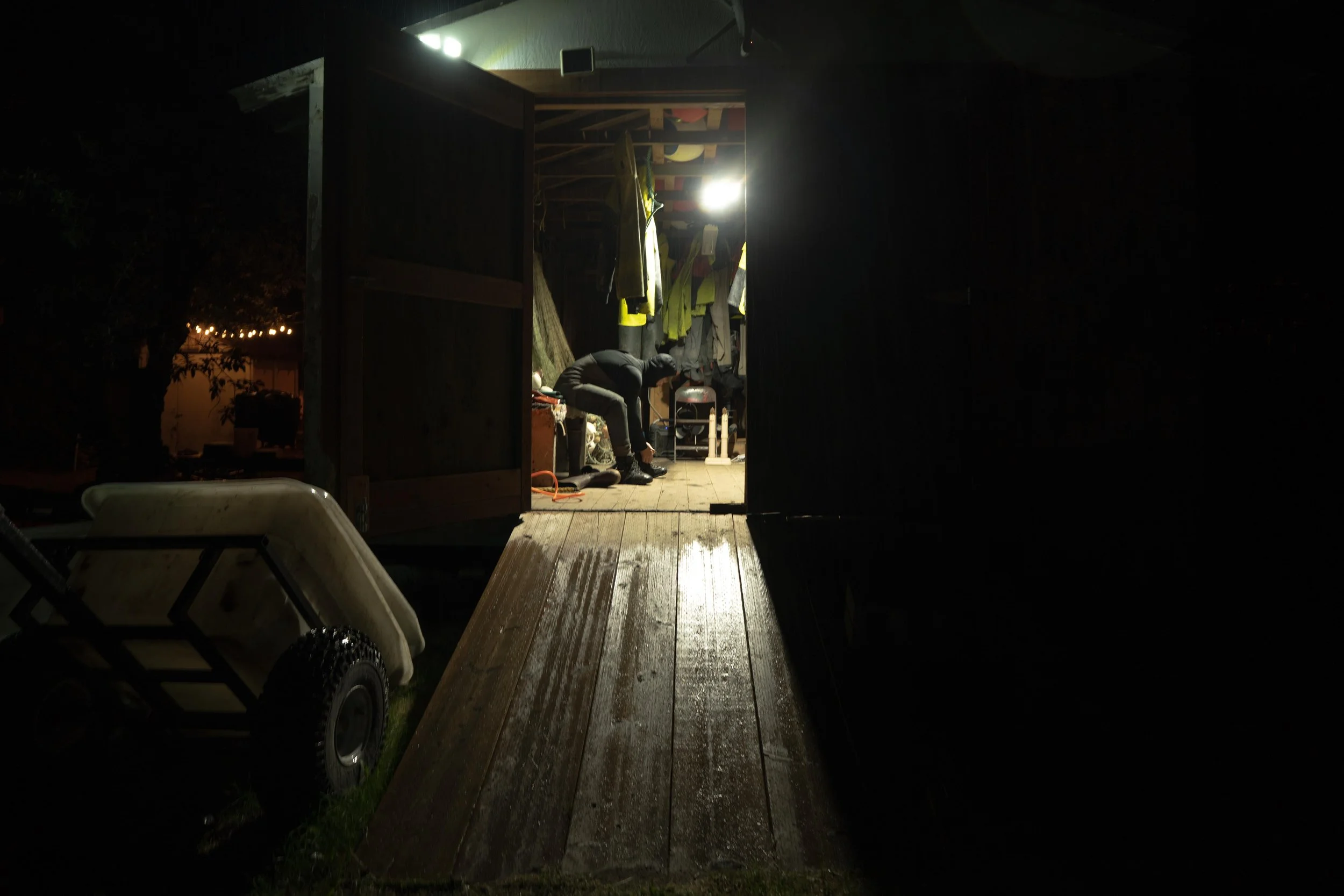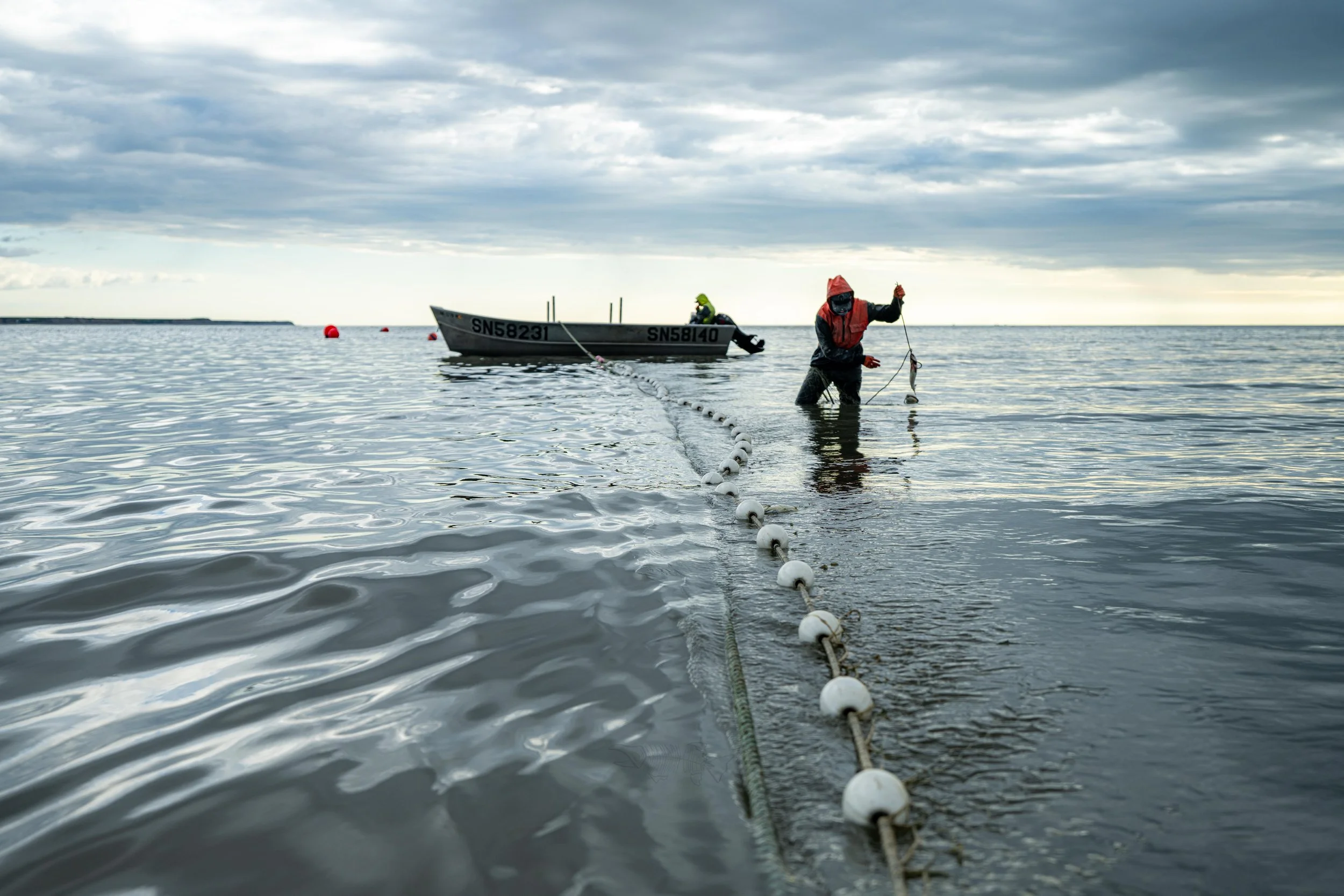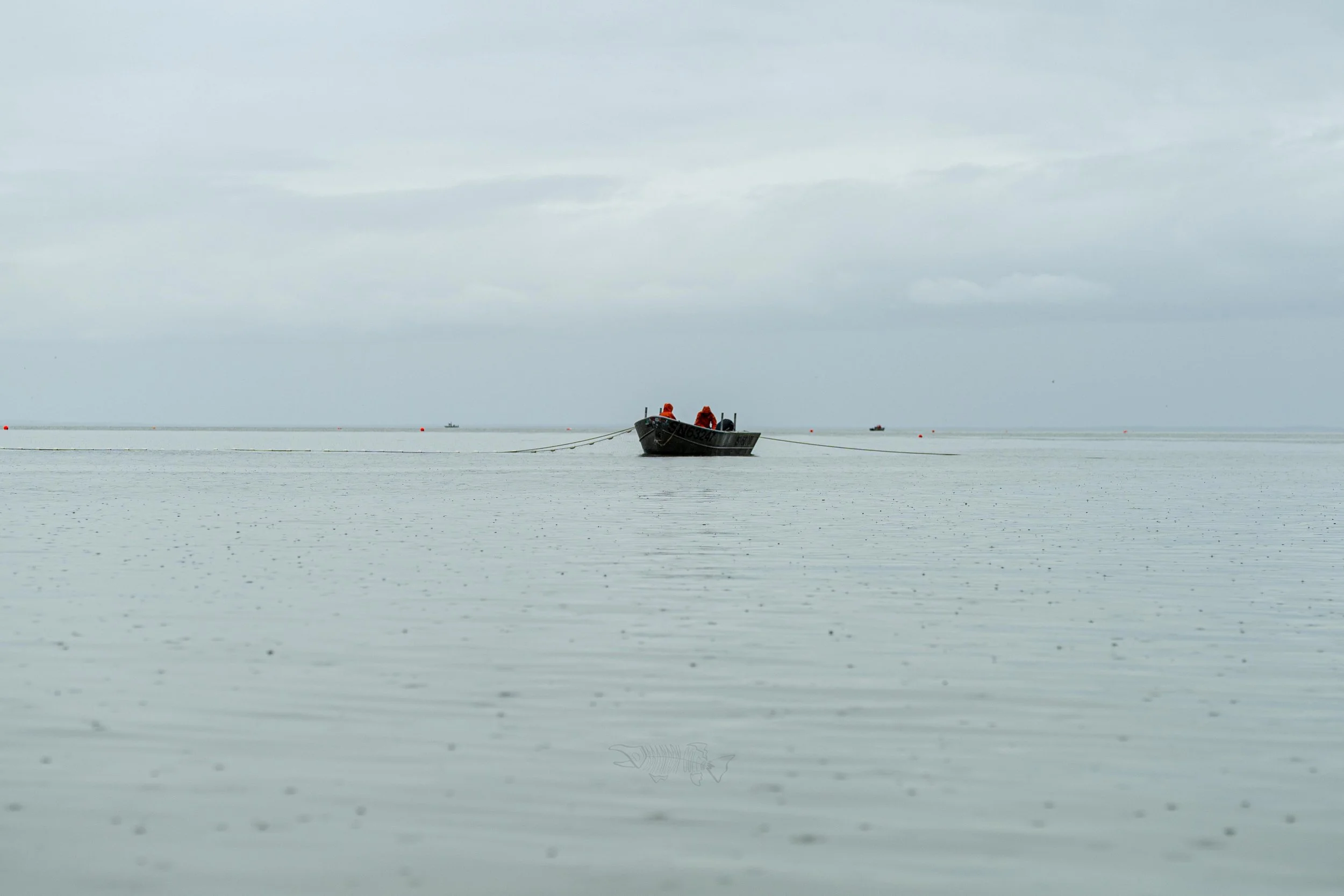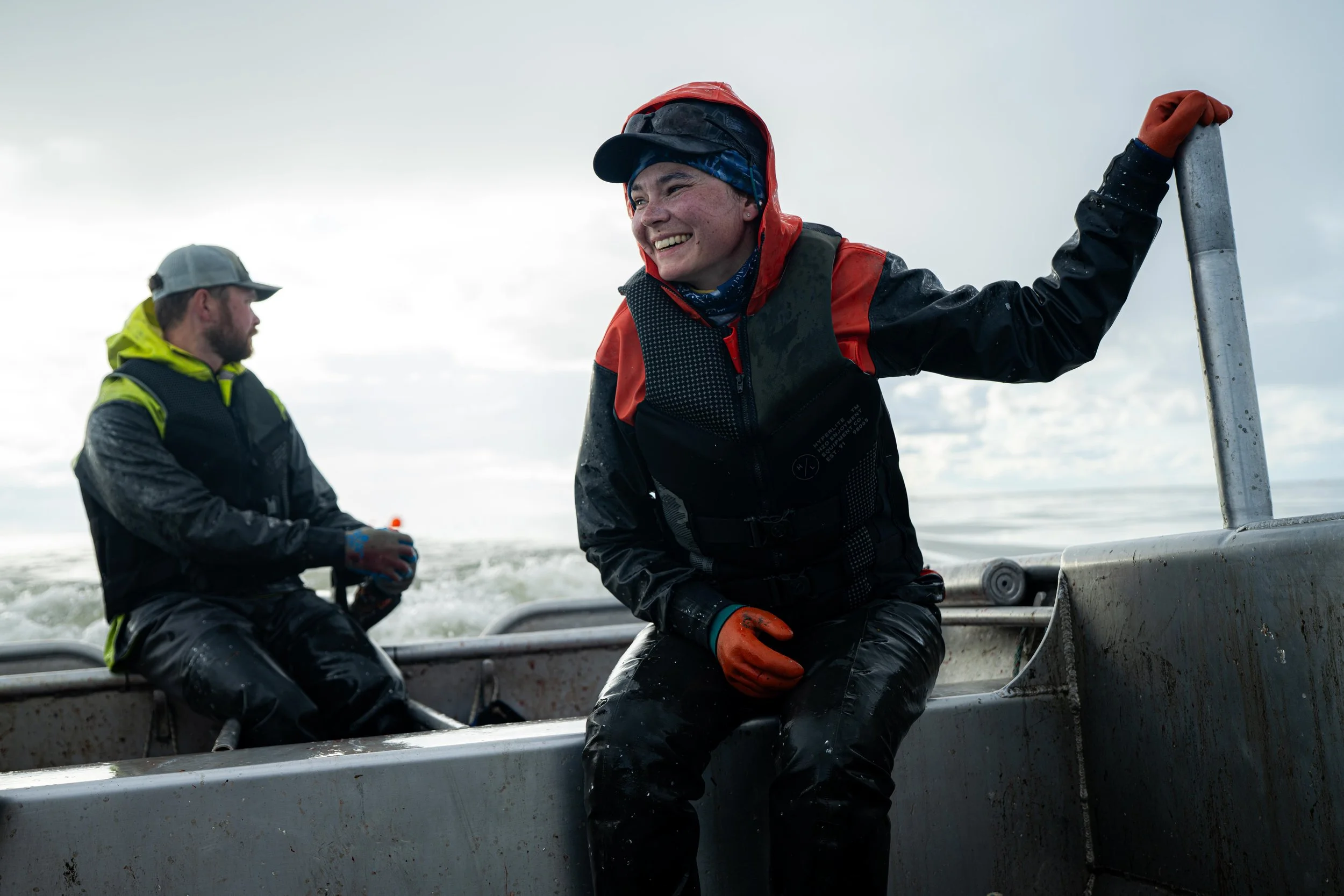Bristol Bay, ALaska
A Summer Commercial Fishing in the World’s Largest Wild Fishery
10 Min Read
Part I – An Intro
This story begins in Bristol Bay, Alaska, a region in the southwestern part of the state known for its world-famous salmon run. To my friends and family in New England, I might as well have been in Russia. To be fair, I was closer to Russia than to the eastern coast of the United States. This small region not only holds the largest proven sustainable fishery in the world—with an estimated 52 million salmon returning to their ancestral spawning grounds this year alone—but also provides the nutrients that sustain the wildlife of Katmai National Park and the Fat Bears of Brooks Falls.
Hauling out the running line and buoys through the mud
For the next six weeks, I would be living and fishing out of the village of Naknek, a town lost in time. Where old rusty cars from the ’60s drive along the road bordering a line of canneries built along the banks of the Naknek River. Over the next 6 weeks, these canneries will process what could be over 20 million salmon, putting in motion an extremely complex web of logistics to ship the most organic and natural source of protein around the world.
Only a few hundred residents live in Naknek year-round, but when the salmon return, the population booms into the thousands for the summer. A diverse group of cannery workers and fishermen walk the one road through town and fill the three bars—whichever one you stray into makes you wonder if you’ve stepped into Chalmun’s Cantina in some strange galaxy far, far away (Sorry, I was on a Star Wars binge when we weren’t fishing).
Across from the Trident cannery, tucked in the brush, is a home passed down through the Hammond family that has stood there since the ‘50s, where I would be staying with my crewmates- Heidi, Jay, and Lauren. Arriving a week before the season started, we began setting up our gear to fish. This included walking buoys and running lines through shin-deep mud at low tide to connect them to anchors drilled by hand into the ground. The running lines, really just a heavy rope stretching 200 yards between anchors, would eventually hold our nets once the fishing season began. The two running lines would make up our inside and outside nets, each allowing for 50 fathoms or a total of 600 feet of net to be attached.
After a few hours of slogging back and forth, we spent one of our last free nights on the couch watching the movie Fury. It would become a perfect analogy for what was about to come- the four of us at our positions, but instead of a tank, it was a 22’ aluminum skiff—chasing a rush. In the movie, during the characters' most miserable moments, Brad Pitt would turn to the others with the phrase, “best job I’ve ever had”. That line quickly became our slogan throughout the season, used not only during our own miserable moments, but also some of our favorites.
Like the actors, we each had our character. Lauren (the sister) – an artist and pottery teacher from Anchorage who had never spent a summer outside of either Naknek or Lake Clark- the region and its heritage run deep in her roots. Jay (the brother) – the one in charge. A bear hunting guide who’s an ox of a human with a quiet demeanor, but when he talks, you listen, and you don’t question it. Heidi (the mother) – the daughter of a governor, stoic, with ties to the region going back generations. In her 52nd year of commercial fishing at this site, she has only missed one season—the year her son was born. And then there was me, a greenhorn with only a week of experience picking fish half a decade ago, way too excited, with a fairly ignorant view of how these next few weeks were going to unfold.
Now, to put commercial fishing into perspective, it was hard, probably the hardest thing I’ve ever done. I had texted Jay before the season started, saying, “I know I will be miserable at moments, but I am excited”. These next few weeks would give a whole new definition to miserable. It was one of those tests to see where your breaking point lies, how close you can get to saying- “I quit”, while still pushing forward. And for some reason, I love those moments, where you are just miserable. They allow you to learn the most about yourself, your true abilities, while also making for the best stories.
Part II- The Job
The night before the opening of the season, we would drive over to the community center to attend the fishermen’s send-off. A potluck, where you can win life jackets in a raffle, and the community makes a prayer, asking for a safe and successful season.
The next morning we would wake up to a sunny, but not too sunny, day. With little to no wind, we launched the skiff just around the corner from an old, empty Peter Pan processing plant that was slowly being consumed by the harsh conditions that shape the region. I can’t remember exactly what time Fish and Game had set that first opener to, but it would be on the first flood of the day. Pulling the truck to the highest part of the beach, the whole town seemed to be there. With a buzz of excitement, after what is always a long winter, it was now time to work.
Motoring over to the running line that we had set out a few days prior, I leaned over the bow, with a hook in hand, to pick it out of the water and lift it overboard. With the line stretching perpendicular to the narrowest part of the skiff, Jay would attach the beginning of the net to the running line using a knot and a mending process. Then we sat, ready, waiting for the minute hand to hit, let's just say, 10:00. As it did, I would start pulling down the running line as fast as I could while the net uncoiled and fell overboard. Every 20 yards or so, Jay would yell, “stop”, and pull the net tight along the running line, before mending an anchor between the two. After 100 yards of pulling, the whole net would be laid out. Looking back, salmon were already jumping out of the water, caught in the mesh, fueling the excitement.
After laying the second net out on the inside, we would spend the next 8 or 10 hours pulling on the running line, back and forth, and back and forth, picking fish that we hauled overboard. Then, when the fishing period was coming to an end, and the nets needing to be pulled out of the water, we would move in the opposite direction, picking fish as we went. Following the tide out, one of us would be pulling on the running line, one would be coiling the corks, another would be coiling the lead line, and then the fourth, normally Heidi, would be picking fish and bleeding them. And by the end, it hit me, this was just agriculture, or aquaculture.
Over the first two days, the weather was perfect, and the rate of catching salmon was manageable, giving me a false sense of comfort. Lauren would warn me that it was not always going to be like this, so enjoy it. She, of course, would be right, and things would change rapidly.
On the 28th, the wind would shift, and Fish and Game would open us for the first 24-hour period. With wind gusts in the high 20’s blowing on shore, the swells picked up to 3-4 ft. As we pulled up to the outside net, the buoys were underwater, and the running line was fully tensioned by the weight of the salmon, dancing in the current. Almost impossible to lift over the bow alone, I laid on my stomach pulling the line to my chest, and with the help of Lauren, into the boat. Now, hooked onto the running line, with the waves crashing perpendicular over the skiff, we pulled the first 5 feet of net into the boat and started picking. We would eventually pull in over 3,600 pounds of salmon- in just the outside net. With my head down, the boat dipping and rolling with every swell, the sun coaxing out the stench of fish slime and blood, I would turn pale and lean over the side boat to start throwing up. With my head down, the boat dipping and rolling with every swell, the sun coaxing out the stench of fish slime and blood, I would turn pale and lean over the side boat to start throwing up. It became one of those miserable moments as the net became a conveyor belt of salmon and I had nothing left in my stomach, leaving me dry heaving, trying to get back to picking salmon. I just needed to get to the end of this tide.
Then, finally, as the tide was going out and the nets went dry, the wind died, and the mudflats reflected the orange skies from the setting sun. After a 10-hour shift, the world was calm again. While I walked the net with Lauren, picking what salmon was left, I couldn't help but turn to her and say, “Best job I ever had”.
With four hours before we had to be back on the beach, we drove to the house with the boat on the trailer in tow, to eat what we could while trying to get as much sleep as possible. Lauren or Heidi would normally make a meal for all of us, which we would quickly scarf down with a few Advil for dessert. Setting a timer for a few hours, you’d wake up and do it all over again. Over that 24-hour opener, we would go on to pick over 20,000 pounds of fish, and before July, we were over 50,000 pounds- beating last season's total.
After a few more days of catching steady numbers and sleeping in the truck, the fishing died down, leading to more closures. This is when I came to understand what made this job so hard: having to manage the pain that was to come.
With the rest came the inflammation. The, muscles and tendons stretching from my elbows to my fingertips ballooned, swallowing up the knuckles in my hands, and suffocating the nerves throughout my arms leading to a stubborn, throbbing pain that seemed endless at the time. The tips of my fingers were worked raw from picking salmon out of a thin, wiry net for 10-hour shifts. I iced constantly, wrapping bags around my hands and wrists, or dunking them in a five-gallon bucket of ice water. No matter how many candied Advil I took, I couldn’t sleep. I couldn’t avoid the pain.
The only thing that worked was going back out and picking until your hands and mind went numb. But this is how everyone knew commercial fishing—not just me.
Normally, when we weren't fishing or sleeping, I’d be sitting upright on the couch, miserable, with ice packs on my hands, looking for the most painless position. Jay would just sit there, sipping coffee-or a protein shake, depending on whether we were getting up or going to sleep—as if it were just another day. With only a smirk, he seemed to get amusement out of my misery.
Then on July 6th, the wind started blowing out of the south, and the next big wave of fish came. With an 11,000-pound tide, then a 12,000-pound tide, we surpassed 100,000 pounds of salmon. During this push, all I wrote in my notes was, “I think it’s about to get really hard. Just one day at a time.”
And I was right, because the night of the 8th became one I’ll always remember.
Heidi brought back her mother’s recipe for smoking the reds we kept.
Part III- The Night of July 8th
Picking salmon under headlamps
When fishing two tides a day, normally one will be spent picking fish in the middle of the night. On the 8th, we would launch the boat into the wind as the sun set, leaving us to work until sunrise under headlamps. The wind, once again, switched and started blowing onshore, with gusts in the high 30s this time. Swells picked up to 4–5 feet, and as we pulled up to the net, the corks had disappeared as we searched for the running line with the light from our headlamps. After multiple chaotic tries, with the waves crashing around us and losing a hook, I was finally able to get hold of the running line, pulling it over the bow with the help of Lauren. As the wind pushed us to shore, the first five feet of net fell into the boat. I took a quick glance down the net, and as my headlamp caught the different sections, not a single mesh seemed to be without a fish. It was the beginning of a very long night.
We picked five feet at a time, as waves crashed over the side and the boat dipped and rolled with each swell. A little over halfway through the net, we cut out early, with nearly 3,000 pounds of salmon covering the deck of the skiff as it sank deeper in the water. Slowly trolling out to the tender to drop off our brailers, we surfed the rollers as waves continued to crash over us, tightening our life jackets.
With the normal tenders at capacity, they had picked up their anchor and headed into the processor to drop off the fish they had stored onboard. So we had to find a new one. We motored further up the river to find that the only tender available was set up to receive from drift boats. As we pulled up to the tender, we were informed that the crane on the leeward side of the wind was out of service, so they had us tie up on the windward side. Right away, we knew this was going to be a bad idea.
With the first big roller, our skiff crashed into the side of the tender, metal on metal, as they tried to drop their buoys and tuck them between the boats. As we all got back to our center of gravity, after being displaced from our seats, we hooked up the brailers as fast as possible. One by one, the crane picked up our 800-pound bags of salmon and deposited them into a tank in their bow. This process would take 20–30 minutes, as each roller slammed us into the side of their boat and water rushed over the side.
With frustration mounting, the last brailer got stuck on a hook. As Jay went to free it, the bag suddenly sprang up, knocking him off his feet. It was one of those moments where time slows down and things start to feel very real.
Seeing that Jay was back on his feet, I sat down on the floor of the boat, holding onto whatever I could. With the final bag weighed and the salmon offloaded, we received our paperwork and the final tally. Before we could push off one last roller, the biggest yet, picked us up and slammed us into their boat one final time.
Heidi, knocked off her feet and falling onto the deck, clambered to the corner of the boat adjacent to me, as a slew of curse words were lost to the wind and the waves, followed by Jay screaming to untie the boat. As he rushed back to the outboard, we pushed back out into the night before we could fall victim to the next big swell.
As the sun rose, a few hours later, the tide went out, and the winds and ocean became calm. It felt as if that night had never happened. We would catch a total of 13,000 pounds that tide, making it our biggest tide of the season. That would bring the last 48-hour total to just under 50,000 pounds. Going on four hours of sleep during that period, this was the peak, not only of fishing, but also of what I felt I could handle mentally and physically. Our new total: 130,000 pounds.
Part IV- The Tail End
The hard part wasn’t over yet, but a fire at one of the processing plants forced us to pull our nets from the water for the following tide. With the break, the pain from the previous few days of fishing set in once again. My hands began to swell, and the knots in my forearms were visibly protruding out of the muscle. Even with the extra time off, I could only sleep an hour or two, sitting upright in a La-Z-Boy, searching for any position that offered the least amount of pain.
I don’t want to sound overly dramatic about how hard this was. I played hockey my whole life and have had my share of broken bones and injuries, but this was different. But growing up with a dad who refused to include the word “quit” in our vocabulary, you march on. Just get to the next tide, then the one after that, knowing it would eventually come to an end.
The night of the 8th marked the tipping point of the season for our catch. The following weeks slowed as more drift boats entered the Naknek-Kvichak region. There was only one more push of salmon, but it was a fraction of what we’d caught earlier in the season. A week later, the salmon slowed to a trickle. My hands began to heal, the pain subsided, and we caught up on sleep. By the 20th, we pulled our nets one last time, and just like that, the season was over. All the pain and suffering of the previous three and a half weeks became a thing of the past, almost as if it had been just a dream.
Now, back in civilization, telling my story of the summer I spent in Bristol Bay, I learned that so many others here have one of their own. Commercial fishing is a rite of passage that countless Alaskans have taken on at some point in their lives, or it is their life. It holds more than just the monetary value of the yearly revenue produced for the region and the canneries. It carries an intrinsic value for everyone who has been part of it. It shapes stronger, weathered, hard working people, who carry their experience and stories for the rest of their lives. It becomes part of their identity, they are people who make America Great. I couldn’t feel more fortunate to have worked with Heidi, Jay, and Lauren, and to have learned what fishing means to them and how deeply it’s rooted in their family. For me, it’s an honor to call myself a commercial fisherman, and this is a story I’ll be telling for the rest of my life. Hell—“best job I ever had.”
I’ll close with this: if we ever leave our wild fisheries vulnerable, whether through mining, trawling, fish farming, or defunding the research and science that ensure their sustainability, we risk losing one of our most valuable natural resources and the people it shapes. The risk goes beyond the tens of thousands of jobs it supports; it threatens a history, a culture, and a future for everyone fortunate enough to be involved. With parts of society pushing to make America healthy again through access to truly organic, American-made, and American-harvested products, I hope people are willing to pay the premium required to keep our fisheries sustainable and local. That they choose wild Alaskan salmon at the store, and not farmed fish from overseas. And that they understand the importance of funding the research and science needed to monitor our fisheries and protect our oceans. So thank Fish and Game. Thank the biologists. And leave our future in the hands of the science needed to sustain a way of life.
